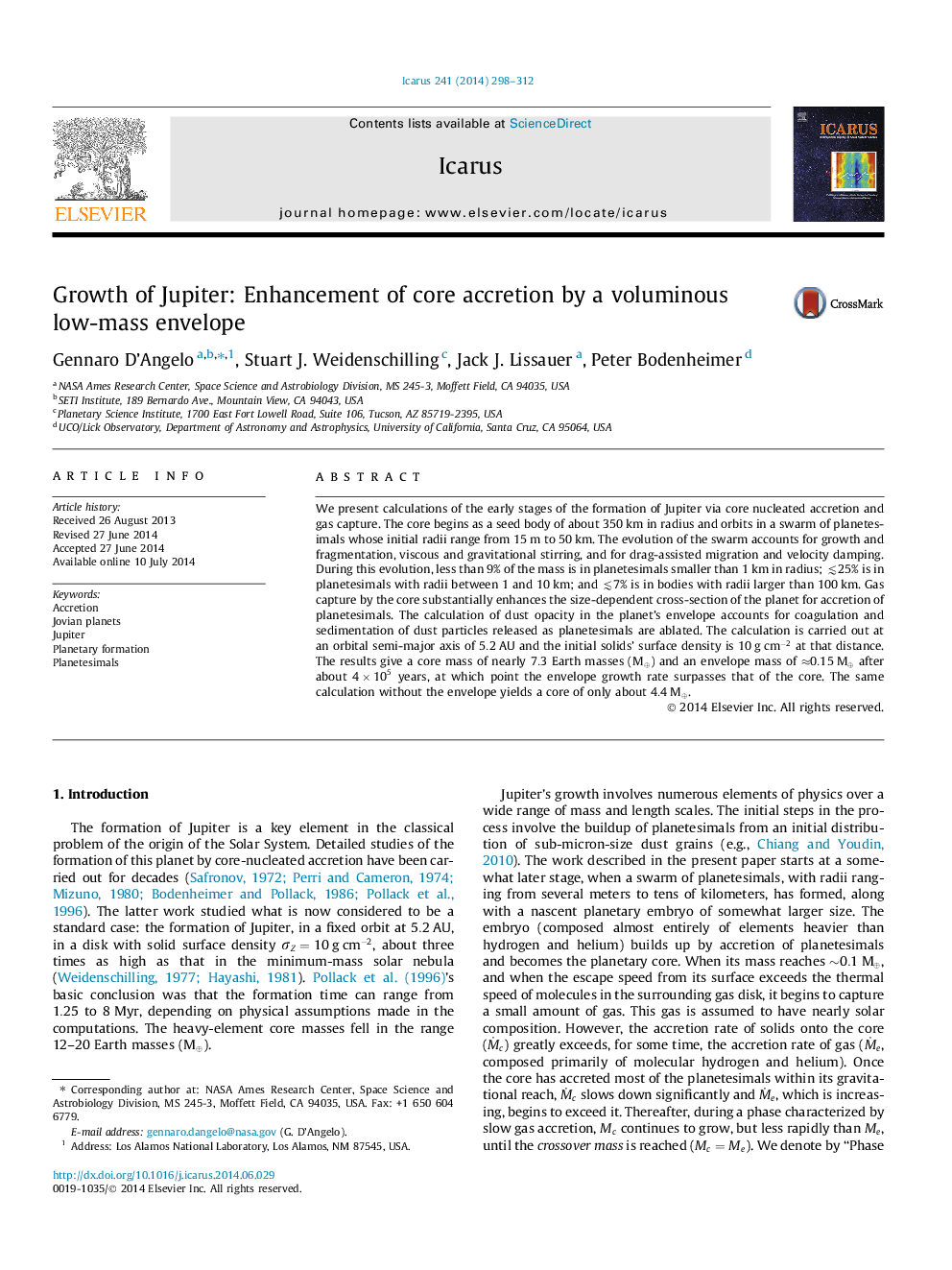| Article ID | Journal | Published Year | Pages | File Type |
|---|---|---|---|---|
| 8137803 | Icarus | 2014 | 15 Pages |
Abstract
We present calculations of the early stages of the formation of Jupiter via core nucleated accretion and gas capture. The core begins as a seed body of about 350Â km in radius and orbits in a swarm of planetesimals whose initial radii range from 15Â m to 50Â km. The evolution of the swarm accounts for growth and fragmentation, viscous and gravitational stirring, and for drag-assisted migration and velocity damping. During this evolution, less than 9% of the mass is in planetesimals smaller than 1Â km in radius; â²25% is in planetesimals with radii between 1 and 10Â km; and â²7% is in bodies with radii larger than 100Â km. Gas capture by the core substantially enhances the size-dependent cross-section of the planet for accretion of planetesimals. The calculation of dust opacity in the planet's envelope accounts for coagulation and sedimentation of dust particles released as planetesimals are ablated. The calculation is carried out at an orbital semi-major axis of 5.2AU and the initial solids' surface density is 10gcm-2 at that distance. The results give a core mass of nearly 7.3 Earth masses (Mâ) and an envelope mass of â0.15Mâ after about 4Ã105 years, at which point the envelope growth rate surpasses that of the core. The same calculation without the envelope yields a core of only about 4.4Mâ.
Related Topics
Physical Sciences and Engineering
Earth and Planetary Sciences
Space and Planetary Science
Authors
Gennaro D'Angelo, Stuart J. Weidenschilling, Jack J. Lissauer, Peter Bodenheimer,
